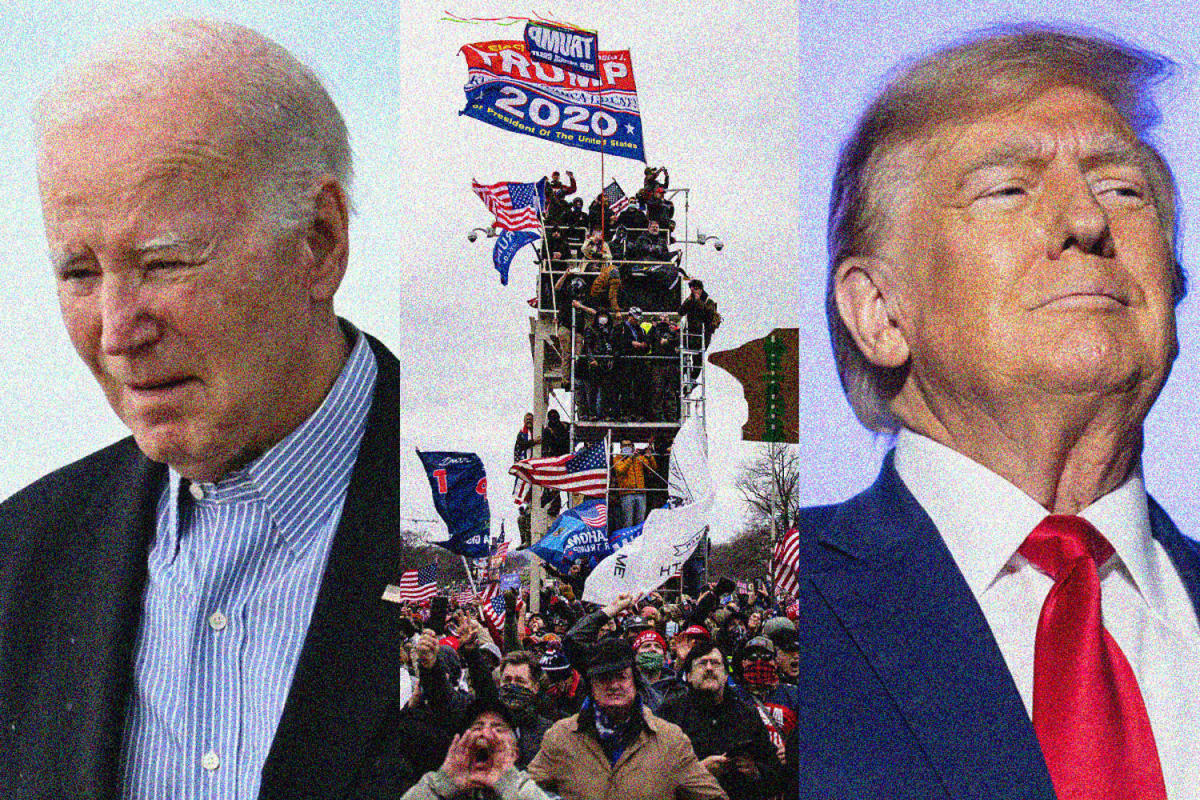When a wildlife cameraman was invited to film the gradual exposure of a gorilla family to humans, deep in the forests of the Democratic Republic of Congo, he got a little too close for comfort to the group’s alpha male.
Suddenly, the giant silverback – known as Mpungwe – charged at him with a shriek.
But, despite being terrified, Vianet Djenguet knew the almost 40-stone (254kg) primate didn’t want to hurt him. It was a test.
Anyone attempting to earn Mpungwe’s trust and become a friend needed to show respect.
“That charge is a way of saying, ‘Look I’ve got a family here, so back off’,” says Djenguet. “But if you stand your ground, it stops him moving forward.”
The gorilla reached out and grabbed Djenguet’s foot.
“I could feel the power of his hand,” says the cameraman. “I was quick enough to pull my foot back and then I completely froze.”
After he had charged, Mpungwe slid backwards down the hilly terrain and disappeared into the dense foliage.
Djenguet had been invited to meet Mpungwe by conservationists in DR Congo’s Kahuzi-Biega National Park. They wanted him to document their attempts to get the silverback and his family used to the presence of humans.
The process – called habituation – can take between two and 10 years and involves tracking and following the animals through the 2,317 sq mile (6,000 sq km) forest.
It will only work if the group’s alpha male, the silverback, is willing to accept the humans – if he does, his family will too.
Mpungwe and his family are among the last remaining eastern lowland gorillas in DR Congo, and the ultimate aim of habituation is to save them from extinction.
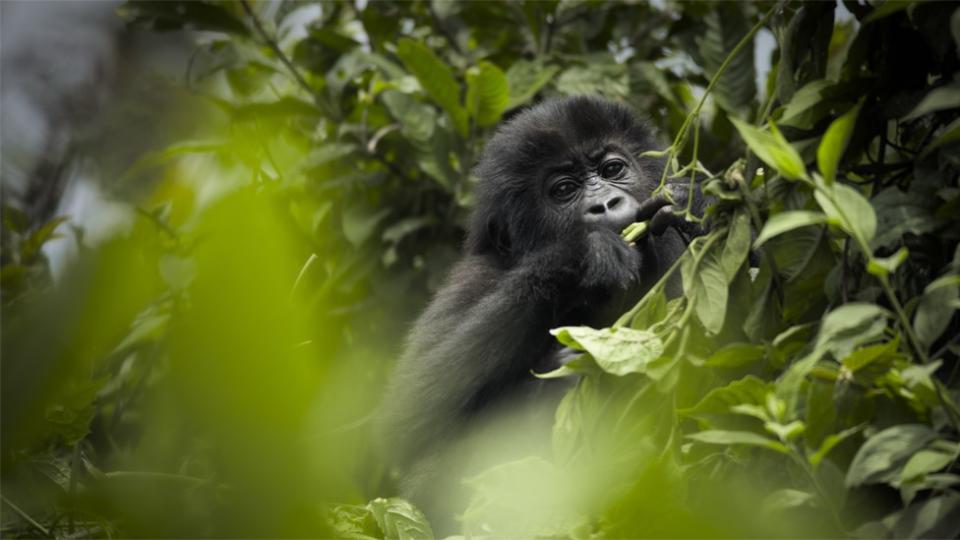
If successful, tourists will be able to visit the family, which will raise income to help protect the gorillas and their habitat.
This is the second attempt at habituating Mpungwe. A previous attempt in 2015 failed.
As an infant, Mpungwe was raised in a family of habituated gorillas, but he was then orphaned in 1996. The rest of his family were killed during a civil war – when the country was known as Zaire.
He roamed the forest, alone, says the park’s chief guide, Papa Lambert Mongane. Over the course of time, he met other wild families and “stole wild females”, says Mongane, until finally forming the family he has now.

But like any protective patriarch, Mpungwe, who is now 35 years old, will do anything to keep his group of 23 gorillas safe. His family includes male and female gorillas plus babies.
Vianet Djenguet was invited to film the habituation process for three months for a BBC documentary. He had to trek through dense forest each day, following the endangered gorillas with an eight stone (50kg) camera and tripod.
Gorillas, who share about 98% of their DNA with humans, are just like us, he says. They mentally “photograph your face so they can remember exactly who you are”.
To show the gorillas he wanted to earn their trust, Djenguet says he had to act like them, mimicking their gestures and mannerisms – watching how they used their hands. When he beat his chest, the younger members of the group would beat theirs back.
“It just reminds me that we are so close to these creatures and they’re doing incredible work for us,” he says. “They are the gardeners of those forests that release oxygen for us.”
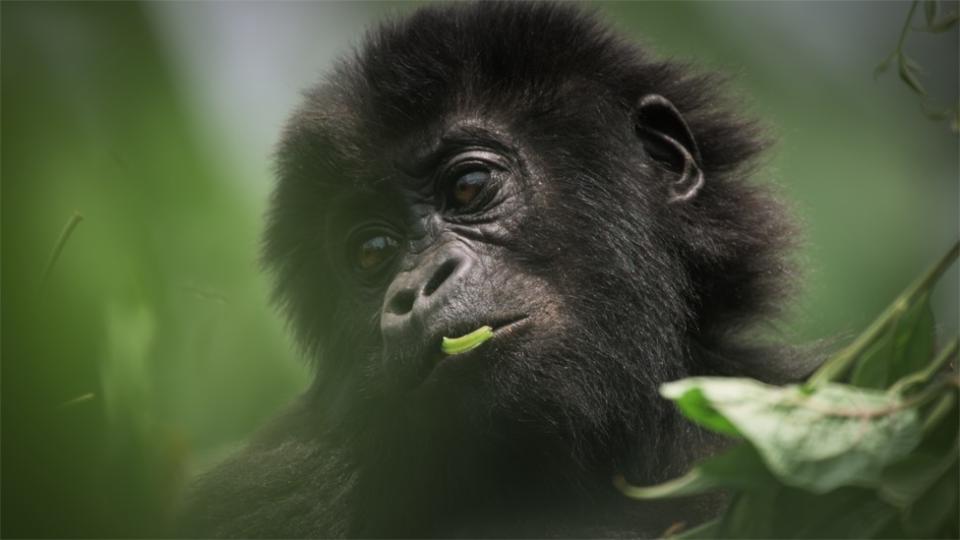
The female gorillas care in a similar way to human mothers, adds Djenguet. He observed a baby gorilla having a tantrum, but says the mother made sure her child stayed relaxed in a manner that reminded him of humans.
A female gives birth to a baby gorilla every four to six years, says Djenguet. This low reproduction rate makes it harder for the gorillas to recover from population decline.
Consecutive wars, from 1996-2003, hit the country’s gorilla population hard – explains the park’s chief guide, Mongane. During this period of political instability, many of the gorilla population were killed and eaten for bushmeat.
And poacher’s traps are still a deadly threat for the park’s gorillas.
Mpungwe’s son lost his foot when he got it caught in a trap, says Mongane, but the animal sensed what he needed to do to survive.
“He got up very early in the morning and plunged his feet into the river, leaving them in there for at least 10 minutes,” says Mongane. “In this way, he disinfected his wounds.”
Before the wars, there were 630 gorillas in the national park – he says – but there are now only believed to be 170, spread among 13 families.
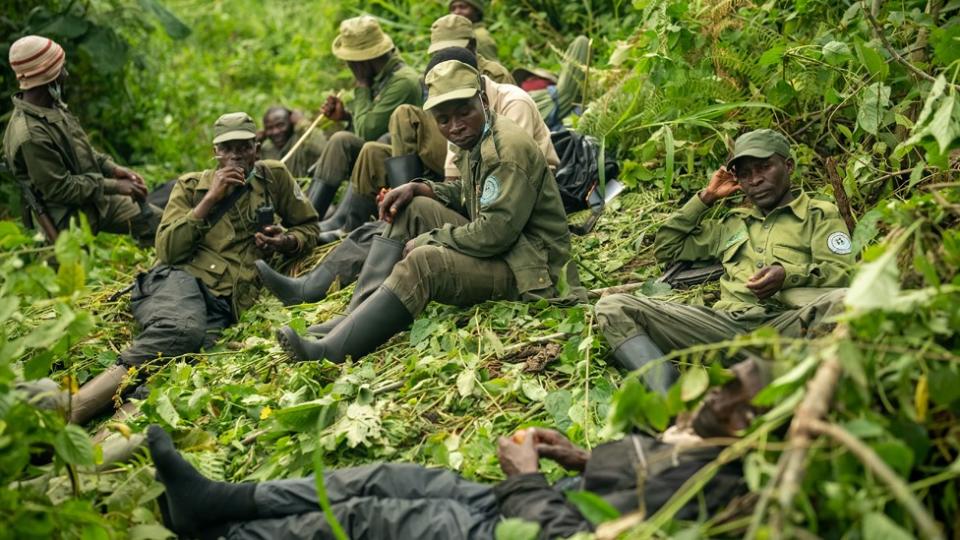
Humans have also impacted the gorillas via deforestation – says Papa John Kahekwa, founder of Pole Pole Foundation, a community-led organisation working to protect the creatures.
The animals’ habitat is being encroached upon by farmers growing crops, new villages being built or illegal logging. DR Congo lost 490,000 hectares (1.2m acres) of rainforest in 2020, according to Global Forest Watch.
As he followed Mpungwe’s family, Djenguet says he felt like the presence of humans was causing the animals to feel stressed at some moments – shown by the diarrhoea-like droppings they produced.
He says if there was enough money for conservation, the gorillas would not have to be part of eco-tourism.
“It would be much easier to just leave them in the forest and let them be free,” he says. “You have to be cruel to be kind, and this is the pure example of it.”
Saving the eastern lowland gorilla is a difficult balancing act and, to succeed, it needs the support of the park’s human neighbours who will also benefit from ecotourism.
When local communities have income, says Kahekwa, they will prevent others in the village from harming the gorillas and their habitat. “In that way, gorillas must pay for their own survival,” he adds.
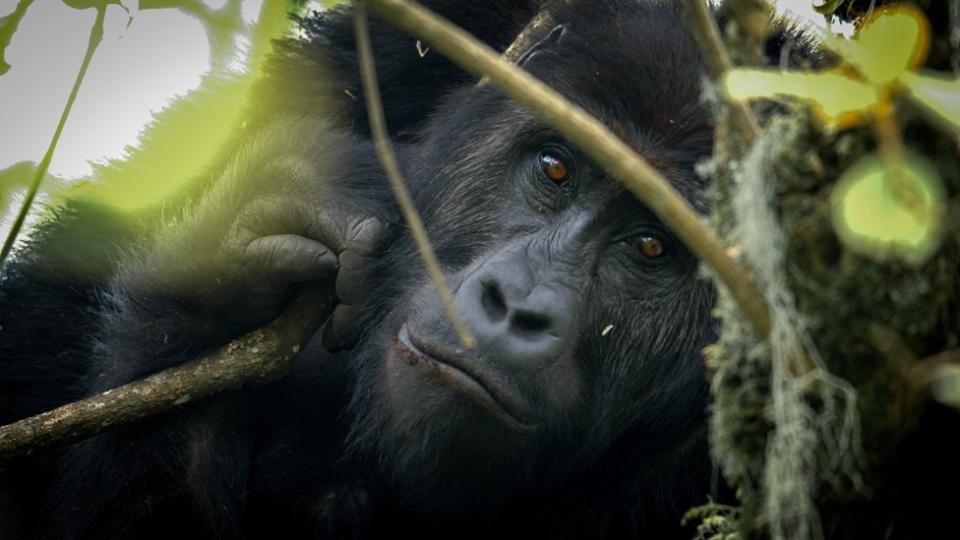
But there are other difficulties. In the mid-1980s to early 1990s, 7,000 tourists a year came to visit the national park, says Kahekwa. Since the wars, about 150 arrive each month. The security situation in much of eastern DR Congo, where most of the gorillas live, remains unstable.
Prior to Mpungwe’s habituation, the park had only one group of habituated gorillas for tourists to visit, led by the silverback, Bonane. Mpungwe is now considered half-habituated, according to the eco-guards in the park. Although he has been visited by some tourists, his group is not as habituated as Bonane’s.
As Djenguet’s three months filming the gorillas came to an end, getting closer to the group every day, he says he felt Mpungwe and his family had “almost adopted” him, an experience he describes as humbling.
“They let me in,” he says.
On his last day of filming, Mpungwe rose up and beat his chest to Djenguet, as if to say goodbye. If he ever returned, Djenguet believes Mpungwe will remember him.
Silverback will be broadcast on Sunday 7 January at 21:00 GMT on BBC Two. Or catch up afterwards on BBC iPlayer.



